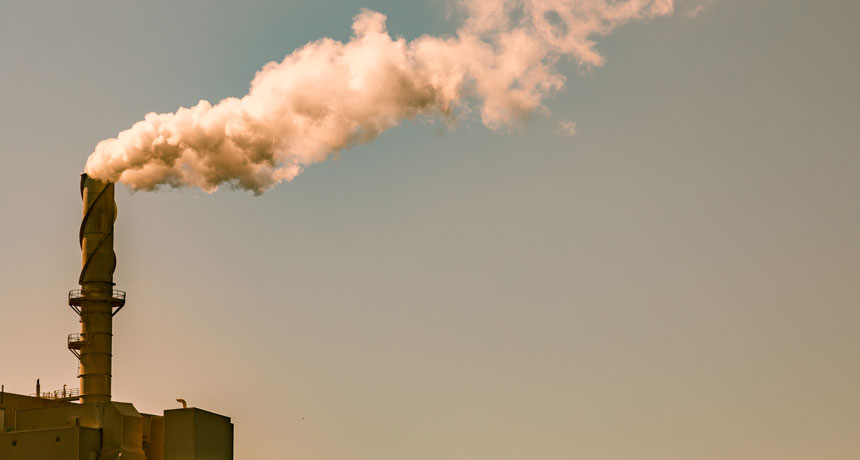
CHEMICAL RECAST New electrochemical cells could transform the chemical components of carbon dioxide pollution into useful compounds for manufacturing and space exploration.
Tony Webster/Flickr (CC BY 2.0)
- More than 2 years ago
New chemical-recycling devices might help combat climate change by making good use of heat-trapping gas produced by burning fossil fuels.
These electrochemical cells convert carbon monoxide into useful compounds much more efficiently than their predecessors, researchers report online October 25 in Joule. If combined with existing technology that harvests carbon monoxide from carbon dioxide, the devices could help transform CO2 captured from pollution sources, like power plant flue gas stacks. That could reduce the warming effect of carbon emissions and produce chemical supplies for manufacturing and space travel.
In the new device, an anode and a cathode are separated by a substance called electrolyte. Carbon monoxide that enters a copper catalyst layer in the cathode combines with electrons as well as charged particles called ions driven from the anode through the electrolyte by an electric voltage. That combination produces new carbon-based compounds, like ethylene gas and liquid acetate. Until now, these types of cells have converted only a small fraction of incoming CO into desired chemicals.
In the new cells, the cathode is backed by a titanium block engraved with tiny channels that feed carbon monoxide directly into the copper catalyst layer of the cathode. Supplying CO to the catalyst through these passageways, rather than simply exposing the cathode to a CO stream where gas would either diffuse into the catalyst layer or bounce off the cathode unreacted, increases the CO’s likelihood of reacting inside the cathode to produce new chemicals.
Chemist Matthew Kanan and colleagues at Stanford University built an electrochemical cell with this design that harnessed as much as 84 percent of incoming CO. The cell generated gas streams containing up to 29 percent ethylene. Other cells have produced gas streams of about only 12 percent ethylene.
In another version of the cell, Kanan’s team replaced the liquid electrolyte with a polymer film, which helped the cell generate less diluted liquid products. This cell pumped out a sodium acetate solution about 1,000 times more concentrated than what other devices have produced. With its 1-centimeter-wide cathode, the cell produces just a few milliliters of liquid in 24 hours.
The researchers still need to investigate the long-term stability of these cells and how well they scale up to industry-size machines, says Chengxiang “CX” Xiang, an electrochemist at Caltech not involved in the work.
Combining this technology with devices that separate carbon monoxide from carbon dioxide could help transform the climate-changing CO2 into useful chemical feedstock, says Christina Li, a chemist at Purdue University in West Lafayette, Ind., who was not involved in the work. For instance, ethylene is used to make various polymers and sodium acetate is a food additive (SN: 4/16/16, p. 5). This could complement efforts to store CO2 gas from the atmosphere in various carbon-hoarding materials, like carbonate minerals (SN: 9/15/18, p. 9).
These devices could also potentially use CO2 captured from the breath of crew members on space ships or even from the atmosphere of Mars. “You can actually grow microorganisms on acetate,” Kanan says. “And you can engineer those organisms to produce all sorts of more complicated molecules for sustaining life on deep-space missions.”






